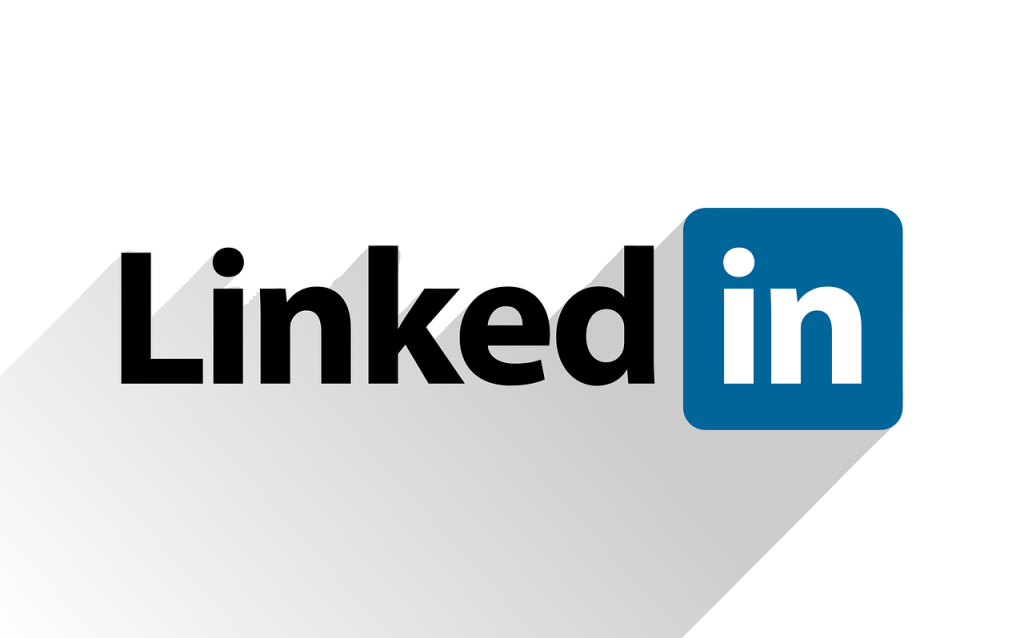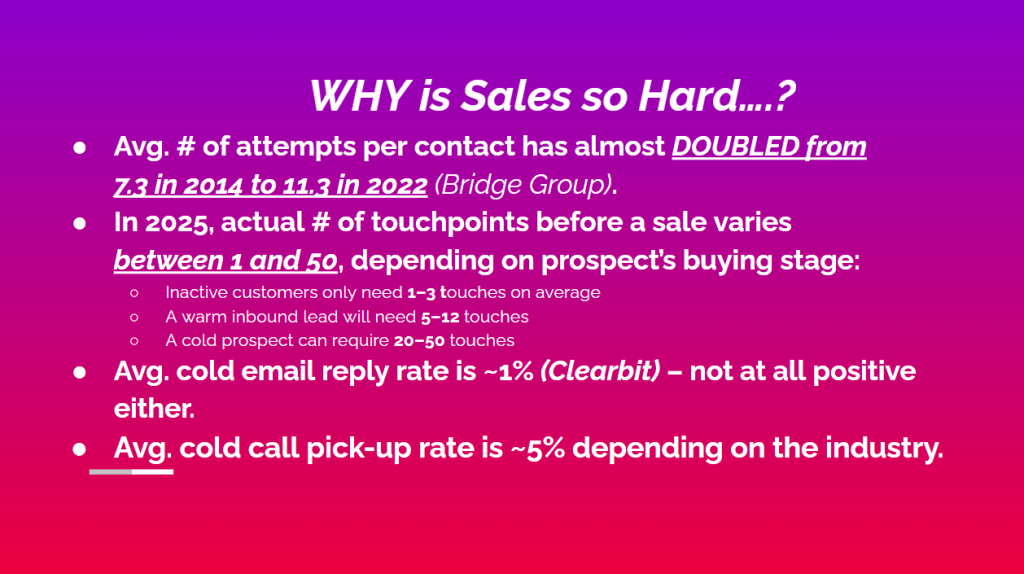LinkedIn Outreach That Converts: 5 Proven Steps to Turn Leads into Clients

If you’re a CEO or Sales Leader struggling to convert LinkedIn leads into clients, it may be time to evaluate your LinkedIn outreach strategy. Most companies waste time on the platform—sending generic messages, targeting the wrong people, or giving up too soon. The result? Missed revenue, low engagement, and a lot of lost opportunities.
But with the right LinkedIn outreach strategy, LinkedIn becomes a powerful sales engine for consistent, high-value outbound leads. Here’s how to fix what’s broken—and start converting.
Mistakes to Avoid in LinkedIn Outreach
LinkedIn is one of the most powerful tools for B2B lead generation, but many teams miss the mark by falling into a few avoidable traps. These mistakes don’t just slow down your pipeline—they cost real revenue.
One of the biggest missteps? Sending generic, automated, and one-size-fits-all messages.
- According to LinkedIn, 70% of decision-makers ignore sales messages that aren’t personalized.
- HubSpot reinforces this, reporting that 80% of decision-makers actually prefer personalized outreach.
- Salesforce backs it up: 63% are more likely to do business with a company that sends them tailored communications.
In other words, if your message looks like it could have been sent to anyone, it won’t land with anyone. And the consequences of using automated bots on LinkedIn extend beyond mere annoyance. It’s explicitly against the platform’s terms of service.
Another common issue is giving up too early. Many sales reps stop after one or two follow-ups, assuming the lead isn’t interested.
How many touchpoints are needed to convert a lead into a conversation? The average number of attempts per contact doubled from 7.3 in 2014 to 11.3 in 2022. That number has tripled in 2025, ranging from 1 to 50 touches depending on the prospect’s buying stage. See the breakdown below.

The bottom line: If you’re not playing the long game with value-based persistence, you’re leaving deals on the table.
Lastly, failing to conduct even minimal research on LinkedIn and Google before engaging with a prospect signals disinterest, and prospects can sense this. Personalized outreach doesn’t mean writing a novel. It means showing you understand who they are, what they care about, and how you can help.
Avoid these common pitfalls, and you’ll set yourself apart from the sea of noise in most inboxes.
How to Consistently Attract High-Value Leads and Turn Them into Paying Clients
If you want LinkedIn to drive meaningful results for your business, you need a clear, repeatable strategy. Here are five proven steps to help you attract high-value leads and convert them into clients.
1. Optimize Your LinkedIn Profile for Maximum Visibility
Your LinkedIn Profile is your first impression—and in many cases, your only shot at grabbing a prospect’s attention. If it’s not clear, credible, and client-focused, you’re losing opportunities before a conversation even starts.
Start with your Headline. Don’t just list your title—use this space to highlight the value you deliver. Think: “Helping healthcare executives simplify compliance and increase revenue” instead of “Founder, ABC Company.”
In your About section, lead with your unique value proposition and specific results you’ve helped other businesses achieve.
Your Experience section should showcase measurable outcomes, not just job descriptions.
And don’t underestimate Recommendations. Social proof from clients or colleagues reinforces your credibility and shows decision-makers that you’re a trusted expert in your field.
2. Refine Your Target Audience (ICP)
A strong LinkedIn outreach strategy starts with clarity around who you’re targeting. Define your Ideal Customer Profile (ICP) to avoid wasting time on the wrong prospects.
Start with the company level:
- Are they the right size and industry?
- What specific problem are they facing?
- Do they have a clear need for your solution?
Then, narrow by geography. Are they located in a region you can serve effectively?
Finally, focus on targeting their job function and seniority. You want to connect with people who have decision-making power, not just anyone with a LinkedIn profile. LinkedIn Sales Navigator is a valuable tool for those seeking to connect with potential clients. Sales Navigator is essential for B2B businesses seeking to generate leads on LinkedIn.
Targeting the right people makes your outreach more efficient and dramatically increases your chances of conversion.
3. Craft Clear, Engaging Messaging
Once your profile is optimized and your audience defined, it’s time to focus on the message. Keep it clear, simple, and relevant. Avoid using jargon or overly complicated language. Speak directly to the problems your audience is facing—and how you help solve them.
To personalize at scale, reference something specific about their business, industry, role, or recent activity. Show them you’ve done your homework.
And above all: offer value first. Share an insight. Link to a helpful article. Invite them to a resource that speaks to their challenges. When your first message delivers value, it sets the tone for a real conversation—not just another sales pitch.
4. The Power Of Persistence: Follow-Up Strategies
Here’s the hard truth: most deals don’t happen on the first touch.
That’s why persistence is essential. But it’s not just about volume—it’s about quality, timing, and multichannel mix.
Utilize a combination of LinkedIn messages, email sequences, and phone calls to maintain visibility. Follow up more than once, but make each touchpoint valuable.
Don’t be pushy sales! Don’t just “check in.” Instead, continue to add insights, ask meaningful questions, or share a fresh industry resource. When every message has purpose, your prospect sees you as a resource—not a pest.
Persistence builds familiarity, and familiarity builds trust. And that’s what leads to conversions.
5. Leverage LinkedIn’s Algorithm for Increased Engagement
If you want to get more out of your outreach, you need to play by LinkedIn’s rules—and that means staying active and visible.
LinkedIn’s algorithm rewards engagement. The more you interact with others, the more visibility your profile and posts receive. Start by commenting on your prospects’ posts and engaging with their content. A thoughtful comment or relevant insight can spark a genuine connection and show you’re not just reaching out cold—you’re paying attention.
Be prompt in your replies, and stay consistent in your follow-ups. Responsiveness reinforces that you’re engaged, credible, and easy to work with—qualities that matter in relationship building.
And don’t just consume content—create it. Share value-driven posts, industry trends, quick-win insights, or case studies that speak to your audience’s biggest challenges. Great content keeps you top of mind and positions you as a trusted voice in your space.
Ready to Optimize Your LinkedIn Outreach Strategy?
If you’re still making the common mistakes outlined above, now is the time to refine your LinkedIn lead generation strategy and approach. When you optimize your profile, clearly define your audience, personalize your messaging, stay consistent with follow-ups, and engage with intent—you turn LinkedIn into a real lead generation engine. At Rutkin Marketing, we help growth-focused companies build outreach strategies that convert. Whether you’re just getting started or ready to scale your efforts, we’ll help you create an outbound system that consistently attracts and closes high-value leads.
Let’s make your outreach work smarter, not harder.
Contact us for a strategy call and see how LinkedIn can drive your business forward.
